PROFILES
People of Palatine
Anson Baldwin
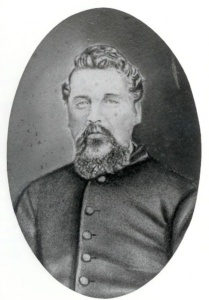
Anson Baldwin, born in New York in 1835 to Lydia Root and John Baldwin, traveled by covered wagon to Illinois with his family in 1844. They bought government land near Deer Grove and built a log cabin. Their farm was where the Palatine Golf Course on Northwest Hwy is now. Anson enlisted in Co. E of the 113th Illinois Volunteer Infantry in 1862 and fought in the Civil War for three years. Shortly after he returned home he went to a party where he met Maryette Castle who had come here from Michigan to visit a cousin. They were married that August and spent the rest of their lives on the Baldwin farm. They had four children: Ernest, Edson, Edna, and Elode. Along with other church and village service, Anson helped form the Palatine Memorial Association. This group worked to beautify local cemeteries and organized Decoration Day (now Memorial Day) services. For many years Baldwin read the roll of the dead and then walked in the parade to the cemeteries to decorate the graves of those soldiers. He died in 1926, one of the last Civil War veterans in Palatine.
Henry Batterman
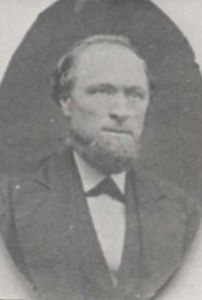
Henry Batterman was born in Germany in 1827. He married Sophia Schu in 1853. They came to Palatine in 1866. Here he began a grain and lumber business with John Slade. Batterman built a flax mill in 1878 and the Batterman Block in 1884. The flax mill was south of Palatine Road and west of Greeley. In 1882 he built a planing mill on adjoining property. This business was run along with his son-in-law, Ausgust Abelman, and a retired farmer, Charles Ost. These buildings burned down in 1892. The Bstterman Building was a large three story brick. Charles Patten’s bank was on the first floor with othee stores. The second story held offices. The third floor was a large room used for dances, plays, The Palatine Mannerchor, and other public programs. That building was located on Brockway Street where the fireman’s memorial is now. Henry Batterman died in 1902.
Ethel Baumann
Interviewed by Connie Rawa and Marg Plank and filmed by Joe Petykowski November 14, 2013
Ethel lived her whole life in one house …
Ella Foreman & Gus Bedurske

This is Ella & Gus’s wedding picture. Ella grew up on the Foreman farm at Hicks and Dundee Roads. Her parents were Matilda and Richard Foreman. Gus came from the Wauconda area and was a carpenter. He came down here to work and was hired to build a barn on the Foreman farm right about where Walgreen’s is now. That’s how he met Ella and married her. They stayed in Palatine Township and raised a family of their own. Their daughter, Vietta Mickus, generously gave us copies of this and many other family photos from four generations.
Palatine Profiles
Click name to view profile…
Anson Baldwin
Henry Batterman
Ella Foreman & Gus Bedurske
Louis Bergmann
Harold Bergmann
James Bradwell
William Busse
Clarinda Cady
George Ela
Ida Pinney Fox
Samuel Cherry
George & Martha Clayson
Charles S. Cutting
Frank Danielsen
William Filbert
Matilda Foreman
Mary Jane & Homer Galpin
Adolf Godknechr
Robert Guss
Aaron Hale
Myron Lytle
Henry & Emma Matthei
Arthur T. McIntosh
Lydia Greene & Austin McKee
William Meissner & Mary Frank
Rita Mullins
Howard Olsen
Henry Pahlman
Morton Pinney
Florence Parkhurst
Henry Schierding
John Hiram Schierding
Henry C. Schroeder
Betsy Ann Slade & Andrew Sefton
Mae Sefton
Joseph Slade
A. G. Smith & Gertrude Lytle
Dr. Carl Starck
Silas & Dolley Mason Sutherland
Nancy Boynton
Clifford DeWitt Taylor
Charles Wittenburg
Thomas Falls Wilson
Mary Meissner
Joel Wood
David Yeats
Louis Bergmann
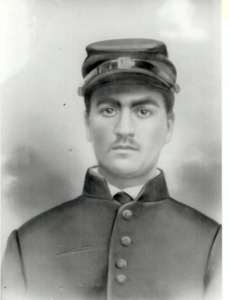
Louis Bergmann was born in Alsace-Lorraine, Germany in 1842. His family came to Palatine Township and settled in the Algonquin and Roselle Roads area. At age 20 Louis enlisted in the 113th Illinois Volunteer Infantry at the Methodist Church in August of 1862. By the spring of 1864, his regiment was located at Corinth, Mississippi. General Grant wanted his army to destroy the train tracks running south of Corinth. In June, about 8,000 troops were headed toward Guntown, Mississippi where they met Confederate General Nathan B. Forrest’s command, about 1/10 that size. Forrest was well-known as a battle strategist and Federal troops were attacked from both the front and the sides at Brice’s Crossroads. After fierce fighting through the day, Union troops began a retreat and many men were killed or captured. Louis Bergmann and two others from his company were taken prisoner and sent to Andersonville. In the late summer a new prison camp was built to alleviate the terrible overcrowding and health conditions. Camp Lawton in Millen, Georgia, was the place where Bergmann was marched along with hundreds of others. The compound was 42 acres with a 15 foot wooden fence, several brick ovens, and a stream running through it. No barracks were provided and the prisoners made their own lean-tos with scavenged material and blankets they had brought with them. The rations were inadequate, there was poor medical care, and the men were exposed to cold nights and rain as October passed. Bergmann died there on October 29, 1864. Burials were made in the fields downstream from the camp. The prisoners were evacuated in November as General Sherman was marching to Atlanta and the camp was abandoned. At least 725 Union prisoners died there in the few months of its existence. A few years after the war, the dead were exhumed and reburied at Beaufort National Cemetery, in South Carolina. The Bergmann family has records of the grave’s location at the cemetery.
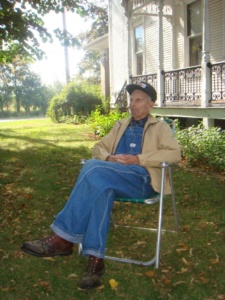
Harold Bergman
Joe Petykowski and Connie Rava went to Harold Bergman’s farm on the northwest corner of Ela Road and Algonquin Road on October 10, 2013 to interview the last and certainly the eldest of our farmers. Harold was 97 years old, lived on the farm by himself, and still grew hay to sell to local racetracks and stables. Palatine Township started out as new farmland with rich prairie soil for Easterners. It didn’t take long before immigrants from Germany came as well. The Bergman family was among them in the 1850′s. The forest preserve took over much of their farmland, but Harold still had 38 acres and the house built in the 1880′s. He driove a much younger tractor, only 78 years old!
Harold Bergman, retired from his Highland Dairy Farm in 2017. He was 100 years old. He died a year later and his farm is now a subdivision, Bergman Pointe.
Judge James Bradwell

James Bradwell lived in Palatine Township for only a very short time but he had strong ties to it. His father, Thomas Bradwell had a large farm in Englishman’s Grove and was a Justice of the Peace here for many years. He had servants to run the farm and he lent money for the purchase of land. Bradwell Road as well as Bradwell School were named after him. James came here as a boy and worked in many jobs in various places. He educated himself and became a lawyer. He and his wife, Myra, lived in Chicago and had two children. Myra was very well educated and studied law. She passed the Illinois bar exam but was refused a license to practice law because she was a woman. Instead she owned and ran a legal newspaper. Judge Bradwell had a number of friends in Palatine. He and Mason Sutherland got permission from the governor of Illinois to enlist Company E of the 113th Illinois Volunteer Infantry to fight in the Civil War. The company was called the Bradwell Guard.
Clarinda Cady & Morton Pinney
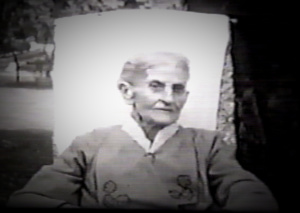
Clarinda is thought to be the first white child born in Palatine Township in 1838. Her parents, Ezekiel and Adaline Cady came to Deer Grove the year before. The farm was on Ela Road just south of Dundee. The Cady Cemetery is still there, started when Clarinda’s brother died.
At age 15, Clarinda married Morton Pinney, a railroad worker, when the Northwestern Railroad was being built through the township. The Pinneys had five children. Morton lived to be 91 and Clarinda to 92.
Clarinda Cady's 90th Birthday
Addie Pinney
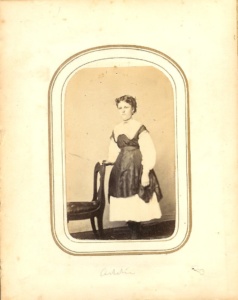
Addie was born to Clarinda & Morton Pinney in Iowa in 1856. Her family moved back to Palatine when she was a child. She was educated here and worked as a seamstress. She was active in the Methodist church, never married and lived with her parents until they died. In 1937 she went to live in the Methodist Old People’s Home in Chicago. While she lived there, she sewed dresses for girls in an orphanage until she was 90 years old. She died at age 97.
Ida Pinney Fox
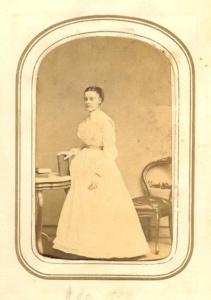
Ida was also the daughter of Clarinda & Morton Pinney. She married Isaac Fox, a Lake County farmer. They had three children. Ida lived from 1854 to 1889.
Morton & Clarinda
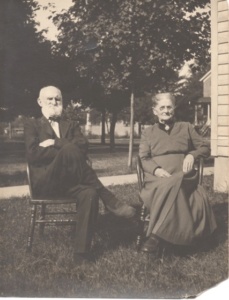
Mr. & Mrs. Pinney at hteir Palatine house on Plum Grove.
Samuel Cherry
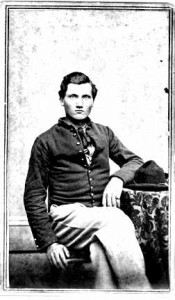
Samuel Cherry was born in Illinois, in 1847. He was the son of Stephen Cherry from New York and Maria Harris of Canada. A large family, they came here from Ohio. Samuel enlisted in the 113th Illinois Infantry on September 28, 1864. He was mustered out on June 20, 1865 at Memphis, Tennessee. In 1869 he married Augusta McCain of Palatine. Her parents, Thomas & Mariette McCain, are buried in Hillside Cemetery. Augusta lived from 1853 to 1928. She had one daughter with Samuel, named Helen, who was born in 1870. At this time Samuel was a sailor on the Great Lakes with his brother, Charles, who was a ship’s captain. In 1880, Samuel was living alone with his parents in Belvidere, Nebraska. In 1898, he was back in Illinois and married Lucy Cross. In the 1900 census, they are living in Chicago with a year old daughter named Elois. He worked as a janitor. According to the 1910 census, the three of them were in Casco Twp., Michigan. He is 63 years old by this time and Lucy is 43. Samuel Cherry died in South Haven, Michigan October 14, 1912. Lucy died in 1930.
George Henry & Martha Clayson
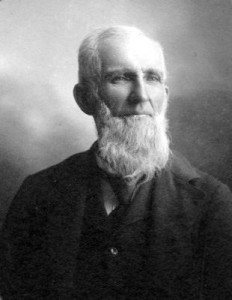
Please see the
CLAYSON HOUSE MUSEUM
for information on this couple.
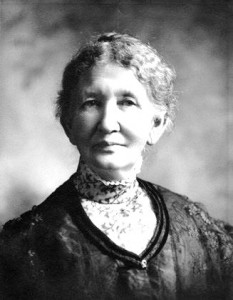
Charles S. Cutting
Charles S. Cutting was born in Vermont n 1854, the son of Charles A. Cutting & Laura Averill. In 1863, the Cutting family moved to Minnesota and then to Salem, Oregon. Charles attended the University of Oregon though he did not graduate. He worked at a newspaper for about a year and a half before coming to Palatine in 1874. He taught at the Wood Street School for a year and then became principal of the school. He started a two year high school in the grammar school building, then the only high school between Jefferson Park (now Chicago) and Woodstock. In 1876, he married Annie Lytle. Though he continued as principal he began studying law under Judge Josiah Knickerbocker. In 1880 he was admitted to the bar and went into law practice with Rollin Williamson of Palatine. In 1887, he was elected to the Cook County Board of Education and held the office of Master of the Chancery to the Circuit Court of Cook County. In 1895, the Cuttings moved to Austin, Illinois, now a part of Chicago. From 1899 to 1913, Cutting held the position of Judge of the Probate Court. He did not run again in 1913 and became a part of the law firm of Cutting, Moore, & Sidley. The Cuttings had one son, Robert Myron. Robert became a lawyer and an automobile manufacturer. Charles Cutting belonged to numerous civic and social organizations and served in many official capacities. He was a Knight Templar, Oddfellow and 32nd degree Mason. He also taught at Kent College of Law. He always remained interested in Palatine and especially in the high school he founded. He gave many gifts to the school’s library. The auditorium, now Cutting Hall Theater, was named after him. He often visited Palatine and spoke here on many civic occasions. He died on April 17, 1936, at age 82.
Frank Danielsen, Mayor 1923-26
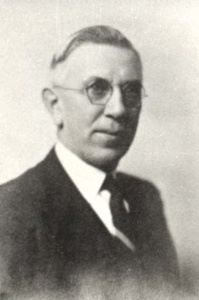
Frank Danielsen was born in Palatine in 1878. His parents came here in 1868 when his father, a cabinet maker, opened a furniture store. The local cabinet maker also made coffins so his father was also an undertaker. Frank went into business with his father and at age 18 got his mortician’s license. In 1908 he married Bertha Wente. The couple had two daughters. Frank was a charter member of the Lions Club. During his term as mayor, the first paved streets in this area were constructed in Palatine. In 1928 the Danielsens bought a new home on Bothwell Street and their former home on Chicago Avenue (Palatine Road) became the first funeral parlor in the northwest suburbs. In 1941, Frank went into partnership with Harry Tharp and when he retired he sold the business to Tharp. In the 1950’s Danielsen again served on the village board and headed the Public Works Department. Mrs. Danielsen died in 1949 and Frank later was remarried to Edna Toseland. He came down with cancer and died in 1962.
William DePue, Mayor 1942-48
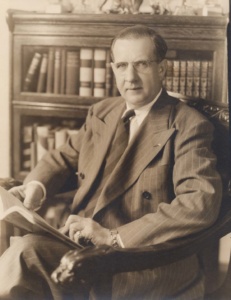
William Dollinger, Mayor 1927-30
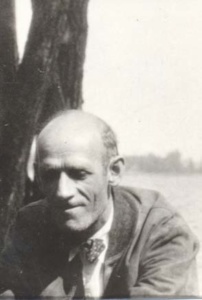
George Ela
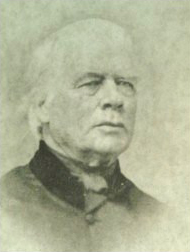
George Ela was the first settler to arrive in Palatine Township and an early settler in Barrington.
It is important to study George Ela because he was a part of the massive change in the cultural landscape of this part of the world.
William Filbert
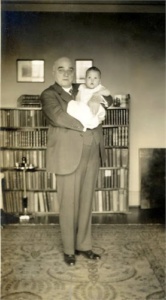
William Filbert was born in Palatine in 1865 to Fred Filbert and Eva Fraas. He went to school here and was first employed by the Chicago & Northwestern Railroad as auditor. During the 1890’s he managed the Palatine Athletic Club’s football team who beat some of the best teams in the area for a championship. He was referee in one game that did not end well for him. His leg was broken when a Palatine player was running with the ball and got knocked over into Will Filbert. In 1898 he joined Federal Steel as auditor. In 1901 this company merged with other steel companies to form United States Steel. With a promotion to comptroller in 1902 he moved to New York City. He continued upward until at the time of his death he was senior director of the steel. He was an authority on finance and was known for the establishment of modern corporate accounting. He was also active in the establishment of United States Steel Pension Fund. In 1902, Will married Alice Lamoille with nearly 1,000 guests. They honeymooned in the Midwest with a stop in Palatine to see his family. They had two daughters. In 1924, Will heard of Palatine’s efforts to establish a library and sent a gift of 71 books. During his long career with U. S. Steel he served as president of Union Steel Company and 71 Broadway Corporation. He was also vice president of Lake Superior Consolidated Iron Mines and of many other subsidiaries. He retired to become general consultant to the company in 1936. He died in his home on Park Avenue in 1944.
Matilda Foreman
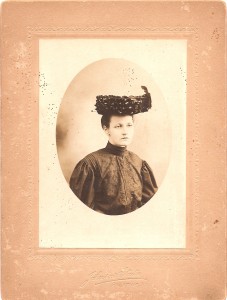
This lovely lady was the daughter of William & Mary Meissner. They settled here after their marriage but in 1861 moved to New Ulm, Minnesota, in an ox cart. Matilda was born there a year later. Because of Indian unrest and massacres they returned to Palatine and Matilda was raised on a farm on Quentin Road.
She married Richard Foreman in 1883 and had five children. Her family lived on a farm at Dundee and Hicks Road until 1907 when they moved into town at Oak and Slade Streets. Her husband became ill and was sent to an asylum in Elgin. Matilda worked as a housekeeper and laundress to take care of herself. She died in 1947.
Photos courtesy of Vietta Mickus (granddaughter of Matilda Foreman)
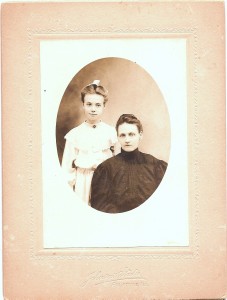
Matilda's Daughter Cora
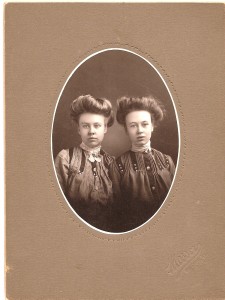
Ella & May Foreman
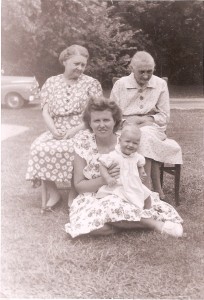
Four Generations
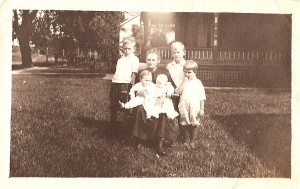
Matilda Foreman with her Grandchildren
Mary Jane Galpin
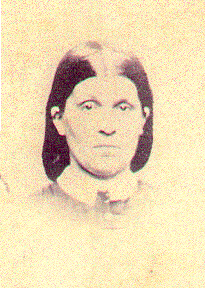
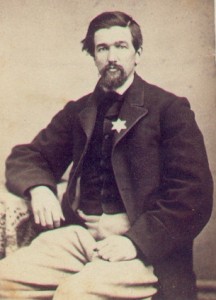
Mary Jane was born in Oneida County, New York, daughter of Ezekiel & Adaline Cady. The family came to Deer Grove in 1837 where they owned a farm. In 1856, she married Homer Galpin. He was born in Massachusetts. He apprenticed as a blacksmith and came to Illinois in 1849, to Palatine in 1854 where he farmed and was appointed constable. He later was deputy sheriff of Cook County and bailiff of the County Court.
The Galpins had four daughters but only one, Nellie, survived childhood. Mary Jane died in 1864 at age 30. She is buried on her father’s land at Cady Cemetery. Homer later remarried and had two sons. He died in Chicago in 1900.
Adoph Godknecht
Adolf Godknechr was the son of cigar maker Henry Godknecht and was born in Palatine in 1879. He married Emaline Kuebler. He worked for the Chicago & Northwestern Railroad. He served as village trustee as well as mayor and died in California in 1951.
Robert Guss
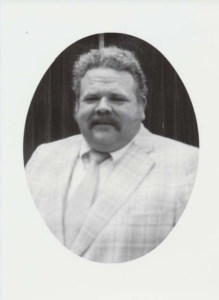
Robert Guss was born in 1935 and grew up on the south side of Chicago. He graduated from Chicago Vocational High School and went on to receive a bachelor’s degree in education. He taught school for a year, then married and went into the shoe business belonging to his wife’s family. The couple had eight children. He went on to bevcome a sales representative for Stride Rite children’s shoes. In the mid-70’s he bought a shoe store in Barrington. He eventually had four shoe stores, one in Palatine. He served on the Palatine Village Council. He was concerned about chronic flooding and failing wells so he ran for and was elected mayor for two terms. The growth of the population of Palatine was draining the acquifers that fed our wells. He led the effort to bring Lake Michigan water to Palatine. He also lobbied the Metropolitan Sanitary District for aid in alleviating the flooding here. Two water reservoirs were built here. Mr. Guss passed away in 2007.
Aaron Hale

Aaron Hale was born in England in 1805. He married there and had eight children. He worked as a coal miner. His wife died in 1851. By 1854 he was in Cook County and married Rachel Vant in thst year. It was a second marriage for her also; they had one daughter, Carrie.
By 1870, the Hales were living in Palatine Township. Aaron is listed in censuses as both a laborer and a farmer. He died in 1890.
Myron Lytle, Palatine’s 1st Mayor
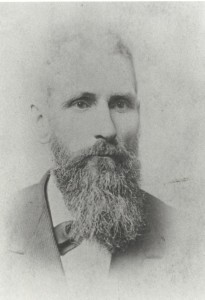
Myron Lytle was born in Malone, New York on February 28, 1826, to William Lytle and Rebecca Rich. Through his mother, Myron could trace his ancestry back to William Brewster of the Mayflower. The family came to Chicago via the Great Lakes when he was twelve years old. His father had a tavern on Milwaukee Avenue in Chicago. Myron came to Palatine when he was in his early twenties. He married Anna Bradwell of Palatine. Her father was a justice of the peace and a well-to-do farmer in Englishman’s Grove near Ela and Baldwin Roads. The couple had one child, Annie. Myron and Charles Lytle had rented a building in town and started a grocery store in 1856.
Myron Lytle was the first mayor of Palatine when it incorporated in 1866. By the 1870’s he was a lumber dealer and also ran a grain elevator with a Mr. Andermann. He built several homes in Palatine. He may even have built the Clayson House. (See below.) Later in life he ran a poultry farm. He was known as a reliable breeder and dealer, especially in Rose Comb Leghorns and Javas, though he carried other breeds of chickens. His obituary said he was “a good citizen, an affectionate husband, a kind father and an honorable man.” He died in 1889 at the age of 63.


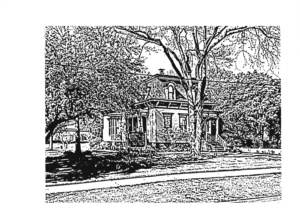
224 E. Palatine Rd.
Wilbur Harris, Mayor 1961-1964
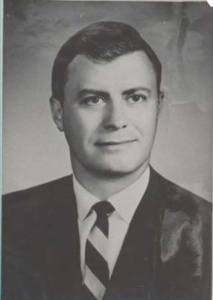
Wendell Jones, Mayor 1973-1977
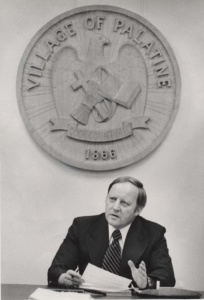
Henry & Emma Matthei
Henry Matthei met his future wife, Emma Sutherland, when he came to Palatine to visit his sister, Henrietta Scheirding, whose husband was a merchant here. He went into partnership with his brother-in-law and eventually owned his own store on the corner of Bothwell and Railroad Avenue. Emma’s parents were pioneers in Palatine Township. Her mother, Nancy Boynton was the first teacher in Deer Grove. Her father, Mason Sutherland, was captain of Co. E of the 113th Illinois Volunteer Infantry during the Civil War. He died in the service. The Mattheis had three children, George. Philip, and Anne. George eventually took over the store, Phlip eventuall moved from Palatine, and Annie married William Brockway.
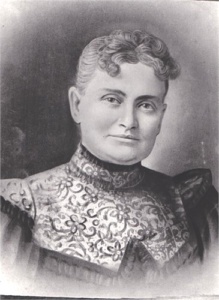
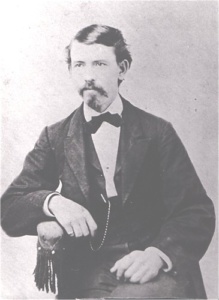
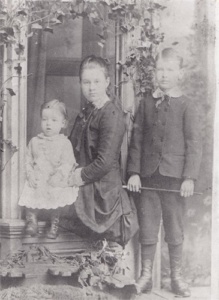
Arthur McIntosh

The Arthur T. McIntosh Co. was founded by Arthur McIntosh Sr. in 1907 in Chicago. McIntosh and his son, Arthur Jr., developed over 500 subdivisions and developments in the Chicago area. Soon after its founding McIntosh bought extensive pastures in the vicinity of 63rd and 83rd Streets from State Street west to Pulaski Avenue in Chicago. He subdivided more than 2,000 acres in the city before turning his attention to suburban property. South suburban Harvey was his first venture outside Chicago. After World War I ended he came to Palatine and liked its gentle rolling hills. He bought some land and developed it into his first subdivision here, Palatine Farms. He went on to add Palanois Park and Fairgrounds Park as well as other subdivisions adding up to over 3,000 acres around the village.
READ MORE about Arthur McIntosh . . .
Lydia Greene & Austin McKee
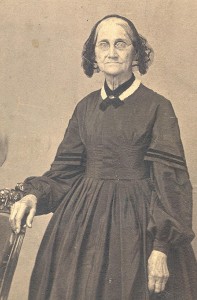
Lydia Greene (1798-1884) married Austin McKee (1799 – 1866) in Portage County, Ohio, before 1825. Austin McKee was the son of Elizur & Abigail Foz McKee and was born in East Hartford, Connecticut. He was a farmer. They lived in Wisconsin a short time before coming to Illinois. Two of their daughters, Electa & Hannah married two of the Bennett brothers who had land here also.
Caleb & Electa’s farm was on Dundee, between Hicks and Smith Street. Grove & Hannah were just a short distance down Dundee Rd. The Bennetts had another brother here, Alanson, who fought in the Civil War.
William Meissner & Mary Frank
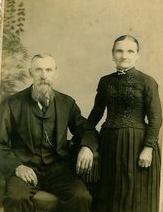
William Meissner and Mary Frank were married in 1853. They settled here in Palatine Township. In 1861, they emigrated to Minnesota in an oxcart. Their daughter, Matilda, was born there. Unfortunately, there was trouble with the Indians there and settlers homes were being attacked and families killed. William himself was wounded twice and his property burned down. The Meissners returned to Palatine in 1862. They settled on a farm at Quentin and Baldwin Roads (Baldwin is now Northwest Hwy). William donated a piece of his land for a rural one-room school, originally called the Meissner School. The Meissners had seven children. Mary died in 1917 and William in 1921.
Rita Mullins
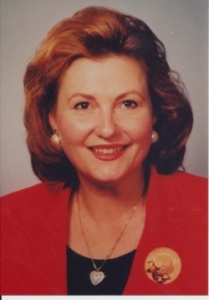
Rita Mullins was born in Washington, D.C. and moved to Palatine in 1958. She attended Palatine High School, Bradley University and the University of Illinois and has worked in the real estate, banking and insurance industries. She operated Aunt Teaks Brockway Bazaar from 1977 to 1987. She became Palatine’s first female village president in 1989 and served five terms in that capacity until 2009.
Courtesy of Scribd.com
John Moodie,
Mayor 1967-1973
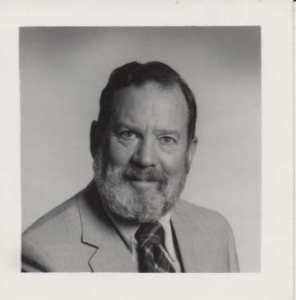
Frank Munch,
Mayor 1985-1989
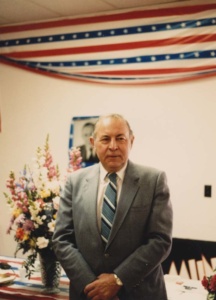
Edwin Ottendorf,
Mayor 1931-1932
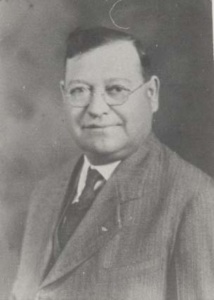
Albert Olms,
Mayor 1899-1900
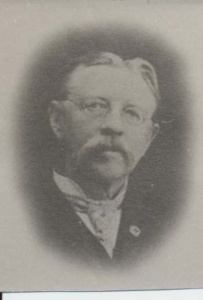
Howard Olsen, Mayor 1955-1961
Howard Olsen was born in Chicago ca. 1918. He spent summers at the Wrigley Building working at the chewing gum press in order to save money to attend North Central College in Naperville. After graduating Wrigley hired him to work in advertising. In 1941 he joined the army for six years, the last two years as a Lt. Col. in Europe. After he returned home he rejoined Wrigley in a marketing and management job with its subsidiaries. He lived in Palatine for 35 years with his wife, Dorothy and four children. He served here is several civic capacities including Township Supervisor, Lions president, and on the board of Northwest Community Hospital and the board of Harper College. He was mayor of Palatine from 1955 to 1961. In 1980, he retired from Wrigley as Assistant Vice President of Human Relations and moved to Florida. He later lived in Cary, North Carolina, where he held positions on the residents’ council of his retirement community. He died there of congestive heart failure.
Henry Pahlman, Mayor 1921-1922

Henry Pahlman was born in Palatine in 1878 and graduated from Palatine High School. He began teaching in a country school in Long Grove. He later joined the brokerage firm of Hill & Joiner in Chicago. He eventually became secretary and treasure of this firm. In 1903 he married Elizabeth Wilson. The couple had no children; both were involved in many civic and social organizations. Henry was secretary of the local bond drive in World War I. He was a member of the school board, board member of the Methodist Church, as well as mayor. He was also a Mason, a Shriner, and a Woodman. The last two years before retiring he was an auditor in the accounting office of the Army Auditing Division in Chicago. He retired after his wife died in 1944 and devoted his time of the project to bring perpetual care to Hillside Cemetery. A committee was formed to arrange for improvements and maintenance; Pahlman was in charge of fund raising. He had raised pledges for most of the $10,000 needed by November of 1944. He died of as heart attack that month.
Ralph Peck
Prominent attorney and local leader Ralph Peck helped put together the individual plots of land that eventually became Deer Grove Forest Preserve. He was convicted in 1933 of embezzlement of funds from First National Bank of Palatine and sentenced to 18 months in Leavenworth prison. Courtesy of Paddock Publications.

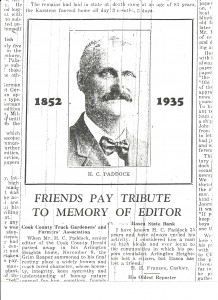
H. C. Paddock
Florence Parkhurst
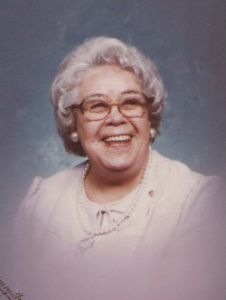
Florence Parkhurst was one of the early members of the Historical Society. She had a large family and knew many of Palatine’s settlers or knew of them. She researched families & events in the old local newspapers.
Her father was a newspaper publisher; A. G. Smith & her mother was Gertrude Lytle. The museum library is named after her.
Henry Schierding, Mayor 1878-1885
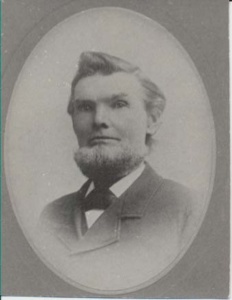
Henry Schierding was born in 1823 in Germany and came to the U. S. in 1837 with his parents. They settled in Chicago and two years later moved to a farm in Schaumburg Twp. When he moved out on his own he settled on a farm in Palatine Twp. He married Rebecca Slade in 1847; the couple had six children. Henry was elected Justice of the Peace the first year after the organization of the township in 1851. He served as such for over 30 years. In 1864 the family moved into the village and three years later Rebecca died.
A year later, Henry married Henrietta Matthei also a German immigrant. This couple had four children. In 1875, Henry started a general store at Slade & Brockway Streets. He also auctioned farm property. He was mayor of Palatine from 1878-1885. He was a member of the Union Evangelical Church and a Mason. Henry died in 1894.
John Hiram Schierding
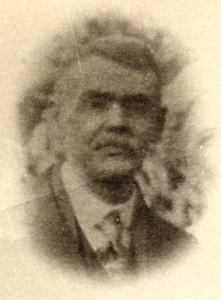
John Hiram Schierding was the son of Henry Schierding and Rebecca Slade, born in Schaumburg in 1851. The family moved to Palatine in 1867. His father was a village merchant and he attended school here,. He went to Northwestern University for one year and in 1875 married Ella Howe. They had one daughter. Ella died in 1880. In 1883, he married Lily Hastings.
John first worked in a Palatine grain elevator as foreman. He later became a merchant and built a general store in Palatine. He was a Mason and member of the Palatine Military Band. He served as an assessor, postman, and three terms as mayor: 1886-87, 1890-92, and 1909-13. He died in 1919.
Henry Schroeder, 1st Chief of Police
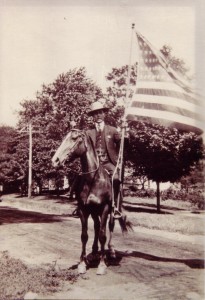
The Palatine Police Department considers Henry C. Schroeder to be its first chief of police. He was born in Palatine Township on his parents’ farm in 1883. He worked as a telephone company collector for 28 years. He was elected to the village Board of Trustees from 1910-1920 and from 1928-1934. At this time there was no organized police department here and only two paid policemen. This photograph from 1916 and a newspaper article from that year refer to him as police chief. He was chairman of the police and lighting committee on the Board. Since there are no records and no one was paid a salary, it is assumed that the chairman was the chief as well. His 1937 obituary says he served as police chief for many years.
He married Gertrude Sigwalt and the couple had two children, Ralph and Vernette. Henry was also a volunteer fireman and a member of the Palatine Military Band.
Betsy Ann Slade & Andrew Sefton
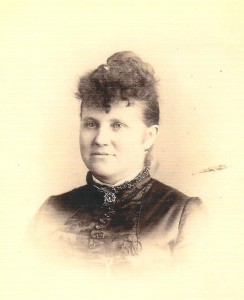
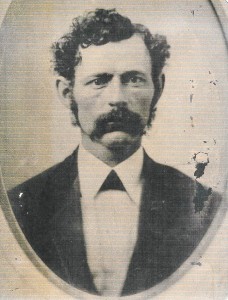
Betsy Slade was born in Palatine in August 18, 1850. She was the daughter of Joseph & Laura Slade. She married Andrew Collins Sefton in November of 1869. Andrew was born in Thurmont, Maryland, on November 22, 1843. He came to Chicago in 1865 and spent a few years there before coming to Palatine, where he lived the rest of his life. The couple had three daughters and three sons: Melvin, Arthur, Josep0h, Ivey Viola, and Mae. Andrew was a plasterer and mason and first came here when he secured a contract to plaster the school house. He was in ill health for the last two years of his life and sufferes from dropsy (edema) for the last several months. He died on March 23, 1912. Betsy was a member of the Women’s Relief Corps and the Order of the Eastern Star. After her husband’s death, Betsy moved to Chicago though she made frequent visits to Palatine. She died on May 6, 1920.
Mae Sefton
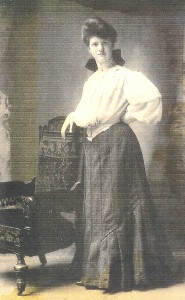
Mae Sefton was born on August 31, 1886, here in Palatine, the daughter of Andrew and Betsy Sefton. Her family was among the earliest settlers in the Palatine area. Her great-grandfather, John Slade, arrived here in 1838, with a set of carpenter’s tools and $10. That year he rented a log cabin from Ben Lincoln and traded with the Indians for corn to plant the following spring. Her grandfather, Joseph Slade, was born and raised in Palatine. He ran a grain and lumber business with three other partners.
Mae’s mother was his daughter. Betsy met Andrew, a mason, when he secured a contract to plaster the school house. Mae grew up here in Palatine with 3 brothers and 2 sisters. She married Roy Harris in 1906. Roy’s mother gave them a house and lot in Arlington Heights as a wedding present. Roy was a member of the Chicago firm of Harris and Tinkham, varnish dealers, and at one time he managed the Bowling Alley. They had two sons, Marvin and Elroy.
Joseph Slade
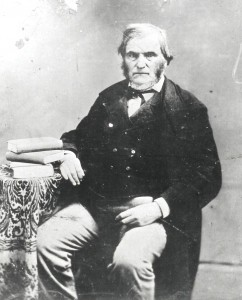
Joseph Slade was born in Vermont in 1825. His parents, John & Betsy Slade, came to Plum Grove in 1838 with their four childen. Mr. Slade had a set of carpenter’s tools and $10 when he reached Chicago. He took up a government claim and rented a log house from Ben Lincoln. He traded with the Indians for some corn which he planted the following spring.
When Joseph grew up he married a girl named Laura (surname not known). They had two daughters, Bessie and Emily. Joseph ran a grain and lumber business with two partners, George Andermann and Henry Batterman. After Laura’s death in 1879, Joseph married again in 1880. His second wife, Martha Manthis, was born in Germany in 1859. The couple had one son, John Joseph. Joseph died in 1886. She remarried in 1913 and lived until 1954.
1909 | Smith Sisters & Friends
This 1909 photograph is of some of the Smith sisters and two of their friends. The Smith girls were the daughters of publisher A. G. Smith of Palatine and his wife Gertrude Lytle. The man in the photo is Charles Johnson of Marshall Field’s Company.
The girls from left to right are: Myra Smith Fosket, Evelyn Barbaras, Grace Smith, Alice Smith, Mildred Smith Sanborn, Florence Smith Parkhurst, Edna Biere.

Dr. Carl Starck
Dr. C. A. Starck, Palatine’s oldest physician, studied under the celebrated physician and surgeon, Dr. Maximilian Muffat. Starck drove the eccentric and old school doctor around on a horse and buggy as he made his calls about the countryside. Starck frequently assisted Muffat with the surgeries, often performed on a kitchen table, either holding a light or administering a light anesthetic.
In the fall of 1900, Starck entered the College of Physicians and Surgeons in Chicago. Starck graduated in 1904 and the next year opened an office in the Bruhns building in Palatine, formerly located on the north side of Slade Street opposite today’s TJ O’Brien’s Bar & Grill. By 1917 he was located in the Kunze building where Monson Jewelers is now.
In 1919 he had the two-story wooden building moved south and east two feet and covered it with a brick facing. This became known as Palatine Community Hospital. Here he healed the sick, delivered babies and trained nurses. Eventually the hospital had 30 beds. After World War II women were starting families and a shortage of nurses caused the hospital to close in 1950.
Silas and Dolley Mason Sutherland
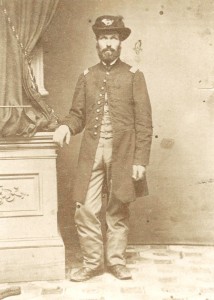
Silas and Dolley Mason Sutherland came to Deer Grove in 1837 with some of their children. Mason Sutherland, their son, had one of the original grants of government land here. He eventually owned 300 acres of farm land at Hicks and Dundee Roads. The farm house was approximately where the Target is now. He married Nancy Boynton, a school teacher, in 1843. Their children were Edward, Maria, Emma, Charles, May, and Hattie Belle. Mason was the first postmaster in Deer Grove. The mail arrived every Saturday and farmers came from miles around to get it.
When news of the 1849 gold rush arrived, Mason and his brother, Silas, went off overland for the gold fields. They nearly died of starvation on the way, found no gold claims, and returned home when they had earned enough money. In the 1850’s, the Sutherlands built a brick house in town at Bothwell and Wood Streets. Mason served terms as justice of the peace and highway commissioner. After the Civil War began, Mason and Judge James Bradwell got authorization from Governor Yates to form Co. E of the 113th Illinois Volunteer Infantry. A meeting was held in the Methodist Church in August of 1862 and mostly men from Palatine or Barrington signed up. They went to Camp Hancock in Chicago to train and were nicknamed the Bradwell Guard. The whole 113th regiment was called the Board of Trade regiment. It was headed by Colonel George Hoge and Mason Sutherland was elected captain of Co. E. They left Chicago for the South in November and Sutherland was given a sword by the ladies of Palatine.
Years later, his daughter, Emma wrote of the last time she saw her father. She said that he came home the day before he left to help harvest the crops. The whole family worked until eleven o’clock at night gathering the grain into the barn. Nancy was pregnant with Hattie Belle but Mason never saw her. He came down with typhoid fever in January of 1863 and died in Young’s Point, Louisiana, on January 27th. Hattie Belle was born the day his body returned home for burial February 9th. Mason willed all his land and property to his wife and the Sutherland family continued to live off the income from the farm. Several years later, Nancy began to receive a widow’s pension. Post # 89 of the Women’s Relief Corps in Palatine was named after him.
Nancy Boynton

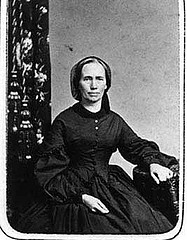
Nancy Boynton was born in New Hampshire in 1820 and was educated to be a teacher there. In 1838 she came to Deer Grove with her parents to join her brother, David, who had already settled here. Her first teaching position here was at Bangs Lake (later Wauconda) in the cabin of Judge Bangs. When the settlers at Deer Grove were ready to start a school, she taught in a log cabin on Ezekiel Cady’s farm. She was paid $1.00 a week and boarded in the school children’s homes. In 1843 she married Mason Sutherland who had come here from Vermont and had a farm at Hicks and Dundee Roads. The Sutherlands had six children. Nancy died in 1904.
Clifford DeWitt Taylor
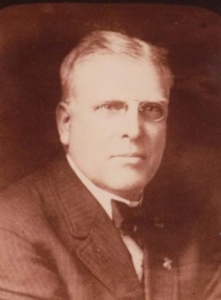
Clifford DeWitt Taylor was born in Chicago in 1854. He began work as a cash boy at Potter Palmer’s Lake Street store. He later attended a business college and then worked for a contractor, the fire department, and a railroad. He next worked as a salesman and in 1879 he became a salesman and a partner in a coat manufacturing business. The following year he married Emma French. In 1881 the Taylors moved to Palatine and had five children. In later years he bred and sold pigeons and squab. He was a member of the village board of trustees for many years and worked for public improvements. Taylor was elected mayor as a member of the Citizens’ Party and served two terms. He was also a member of many fraternal organizations. Mr. & Mrs. Taylor both died in 1928.
Charles Wittenburg
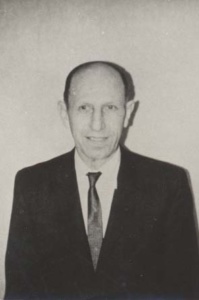
Charles Wittenburg was born in Palatine in 1891 on the farm of his parents William Wittenburg and Mary Peck. He was a general contractor and built many of Palatine’s homes. He married Clara Kiehl and the couple had three children. Wittenburg was elected village trustee in 1923 and served on the board until 1934. In 1949 he was again elected trustee and served until 1957. In 1953 he was elected village president (mayor) for two years. He served as chairman of public works and acquired land where two large wells were located. He also participated in drafting the village’s first master plan and supported the first subdivision ordinance as well as amendments to the building and zoning ordinances. He died in 1968.
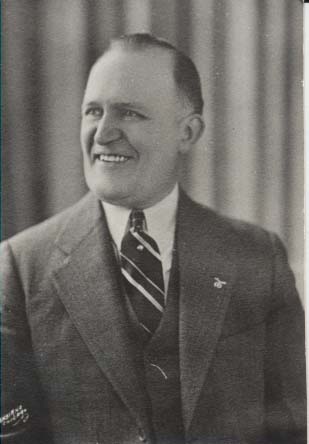
George Voss, Mayor 1949-1951
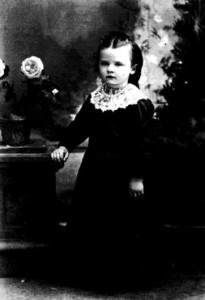
Libbie Whitman
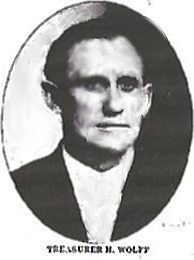
Henry Wolff
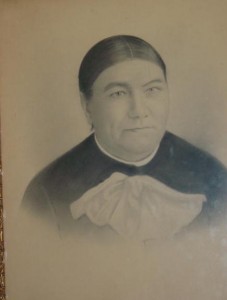
Minnie
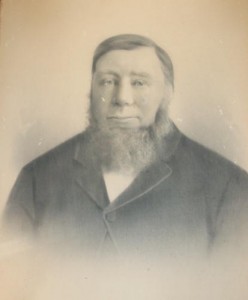
Heinrich Thies
Thomas Falls Wilson
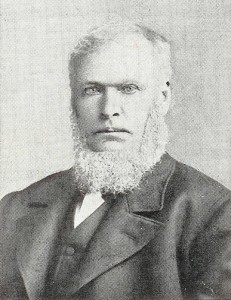
Thomas Falls Wilson was born in Ireland in 1810, the son of Andrew Wilson and Jane Falls. The Wilson family came to the U. S. by 1820 and settled in Schenectady, New York. They had twelve children. Thomas came to Cook County in 1839; he worked on the Asa Dunton farm and then in 1840 settled on government land in the vicinity of Baldwin and Roselle Roads. He had married Mary Angeline Norton in 1832; she died in 1850. He would marry three more times. Mr. Wilson was licensed to preach in 1849 by the Rock River Conference of the Methodist Churh. For about five years he rode a circuit in Lake County. He served the Methodist Church here as a local preacher, a class leader, steward, and trustee of the church. In his later years he lived at 200 N. Bothwell St. in a house his children built for him. It is said that he was a character and was often called Uncle Tommy by people who knew him. He died in 1886 and is buried in Hillside Cemetery.
Mary Meissner
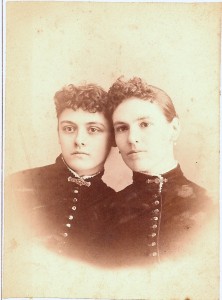
Mary Meissner was the daughter of William and Mary Meissner who had a farm at Quentin & Baldwin Roads. She married Henry Wittenberg whose family had a farm at Quentin near Palatine Road.
After their marriage they lived on the Meissner farm where Henry worked. He later purchased the farm from his father-in-law. They had five children, one of whom was Bertha. Bertha grew up on the farm and married Fred Neitz in 1910. He was also a farmer.
Joel Wood
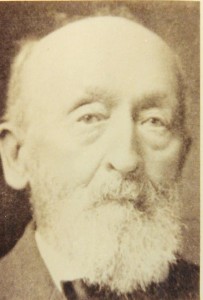
Joel Wood was the son of Samuel Wood and Huldah Cole, born on December 10, 1810, in Smithfield, Pennsylvania. He married Hannah Rockwell of Canton, Pennsylvania, on August 10, 1834. The couple settled in Troy Township but were not satisfied there so bought an improved farm near Alba, Pennsylvania. Six sons were born to them: Thomas, Marshall, Crawford, Samuel (died in 1843), Ezra, and Emersen. They remained there until 1846 with little financial success. They sold the farm and traveled to Palatine Township by wagon. Joel Wood purchased 80 acres of prairie here at Palatine Road and Northwest Hwy. for $1.25 an acre. He built a cabin for his family, raised a crop of wheat, and cut it with the first McCormick reaper used in Cook County. He later bought 40 more acres of land. Hannah bore him three more children named Henry, Sarah, and Emma. The Chicago & Northwestern Railroad was planning a train line to run through this area and Joel Wood did some work for them constructing an embankment. He bought 80 more acres along the rail line and with Mason Sutherland solicited the building of a station here by offering a $10,000 subscription to the company, more than the offers made in two other areas. He built that depot in 1855 for which the railroad company paid him over $1,000. He surveyed and platted a new village around the depot. Elisha Pratt moved his small store across the tracks from the depot the same year. Hiram Thurston built the first house in town. Joel Wood donated land for Methodist and Lutheran churches , a school, and a cemetery. The school, of course was named after Joel Wood as was the street it was on. The original section of Hillside Cemetery along Smith Street was donated and sadly, one of the early burials there was wife Hannah when she died of lung congestion in 1857. Three of the Wood boys fought in the Civil War; Thomas, Emerson, and Marshall who came home wounded in 1864 and died. Ezra and Crawford died of illnesses before and after the war. A couple of the children married and moved away.
With his family gone, Joel Wood sold his farm and holdings and moved to Kansas. He started a grocery store in Grantville, but that venture was a failure. He moved to Lyon County, Kansas, bought a farm, and in 1874, he married widow Elizabeth Campbell. He attended a family reunion of 225 relatives in Smithfield, Pennsylvania, on his father’s homestead. He was then the oldest living member of the Wood family. In 1888, they moved to Elmira, California and planted a fruit orchard. In 1891, they returned to Kansas where his wife died in 1896. He lived with his daughter, Emma, in Kansas well into his 90’s, but he never returned to Palatine.
David Yeats
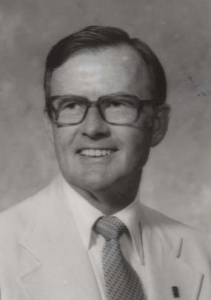
David Yeats was born in Washington in 1921. He graduated from the University of Washington with a degree in accounting. He married Margaret McNoltz in 1945. She passed away in Chicago in 1995. Yeats was the co-founder of Century 21 Village Square Real Estate. He was a president of the local Lions and also a founding member of St. Thomas of Villanova Church in Palatine. He served as mayor here from 1965-1967. In 1999 he married again in Lake Geneva. He and his wife, Betty, also had a residence in Florida at that time.
Yeats died in 2004.